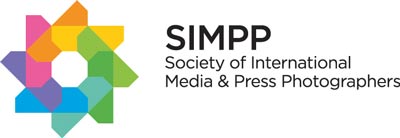articles/Media/proofbeyondreasonabledoubt-page4
Proof Beyond Reasonable Doubt - proofing - part 4 of 1 2 3 4 5 6 7 8 9 10 11
by Mike McNamee Published 01/10/2008
Digital Proofs
This is a terminology that has become confused as both low-grade and high-grade proofs may both be printed using inkjet technology. It should therefore be treated with caution and if somebody is using the phrase you have to ask them to clarify just what they mean by it.
On Screen - Soft Proofing
In 2003, this was a relatively new feature, introduced in Photoshop 6 and onwards. Assuming that the relevant profile is available in the 'colour' folder, Photoshop can access it and present, on screen, a quite accurate impression of how an image will print with that profile/ink/paper combination. It is turned on by clicking View>Proof Colors>Custom; then select the profile from the drop-down menu. If your CMYK working space is, for example, Europe Press 2 and you wish to soft proof to that standard then clicking Proof Working CMYK or simply Ctrl-Y will produce the result. You may even compare different options for output by clicking Window>Document>New Window.
This opens a new view of the current image, which can be soft proofed with a different profile.
Perfect representation of an output is not possible because screens and paper are distinctly different ways of displaying images. It is nevertheless possible to obtain an accurate idea of how an image will behave when it is printed. This assumes that your screen is calibrated and is displaying at the same colour temperature as your viewing area. Pre-press standard is D50 (ie 5000°K) but other standards use D65 (6500°K). If you do not adjust your monitor, it is quite likely to be running at 9500°K and will be very blue. Until your eyes get used to it, D50 will look quite yellow compared to D65.
Of greater importance to viewing is actually the illumination level. Screens used to be quite dark (think about how poorly a monitor lights a room on its own) and a transparency to be matched should be lit to the same level.
On the other hand ISO standards for 'proof viewing' call for very high illumination levels (1,500 to 2,500 lux compared to normal office lighting levels of 200 lux). At the same time the standard calls for near darkness when adjusting on-screen images (32 lux). You certainly can't maintain both in the same room as the proofing level will flood light everywhere! Some experts recommend that you do not place a transparency viewer and monitor side by side but force the user to turn away by 90° to make the comparison. Generally the less expensive LCD monitors that have totally replaced CRT technology since 2003 produce too much luminance (up to 450 cd/m2 compared with the requirement of 95cd/m2). It is only after you invest more than about £750 that you get a monitor with sufficiently good luminance control.
Please Note:
There is more than one page for this Article.
You are currently on page 4
- Proof Beyond Reasonable Doubt - proofing page 1
- Proof Beyond Reasonable Doubt - proofing page 2
- Proof Beyond Reasonable Doubt - proofing page 3
- Proof Beyond Reasonable Doubt - proofing page 4
- Proof Beyond Reasonable Doubt - proofing page 5
- Proof Beyond Reasonable Doubt - proofing page 6
- Proof Beyond Reasonable Doubt - proofing page 7
- Proof Beyond Reasonable Doubt - proofing page 8
- Proof Beyond Reasonable Doubt - proofing - proofing page 9
- Proof Beyond Reasonable Doubt - proofing page 10
- Proof Beyond Reasonable Doubt - proofing page 11
1st Published 01/10/2008
last update 11/11/2019 11:46:30
More Media Articles
There are 20 days to get ready for The Society of Photographers Convention and Trade Show at The Novotel London West, Hammersmith ...
which starts on Wednesday 14th January 2026








